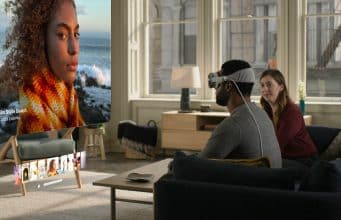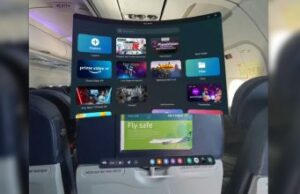There have been plenty of hands-on impressions and various glimpses of what using Vision Pro is like, but a new video from Apple offers the clearest look yet at the experience.
Today Apple published a “guided tour of Vision Pro,” which might be painfully scripted, but actually does a great job of showing what it’s like to use the headset (and this is coming from someone who has used the headset on multiple occasions).
Although the demonstration uses compositing to put the imagery from inside the headset into the shot with the user, pretty much everything you see here are actual applications running on Vision Pro—exactly the way they look and act.
The tour shows how to navigate the headset, the Photos application (including what panoramas and spatial content looks like). We also see the Apple TV app in action, what it’s like to use the headset when connected to a MacBook, and with FaceTime between two Vision Pro users or a Vision Pro user and a non-headset user. And at the end we get a glimpse of an immersive application with an app that brings you face-to-face with a life-sized dinosaur.
We also get an ever-so-brief glimpse of Siri used on Vision Pro, at the 3: 40 mark.
What I find most interesting about this video is how Apple is primarily highlighting very simple and straightforward uses—like navigating the interface, looking at photos, or doing a FaceTime call—rather than trying to drop people straight into the deep end with fully immersive content.
Those simple (and familiar) uses get very little attention in the marketing of most other headsets like Quest or PSVR 2. It’s an interesting gambit for Apple to focus on the kinds of things people can already do on existing devices like smartphones and laptops, while most others in the industry are focused on enabling completely new experiences that aren’t possible on 2D devices. Ultimately, the best headset is probably going to be the one that does both.



